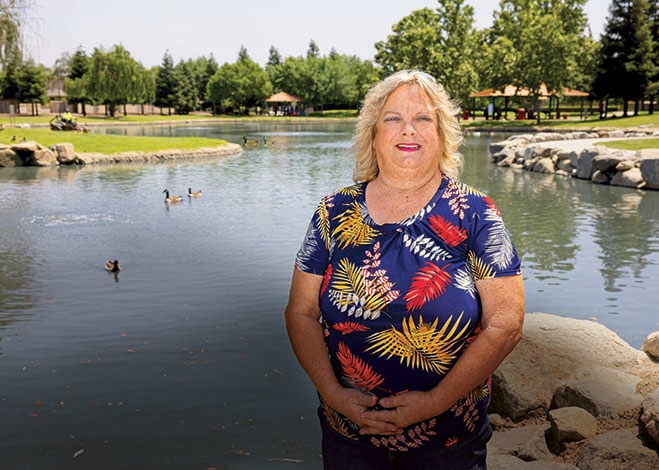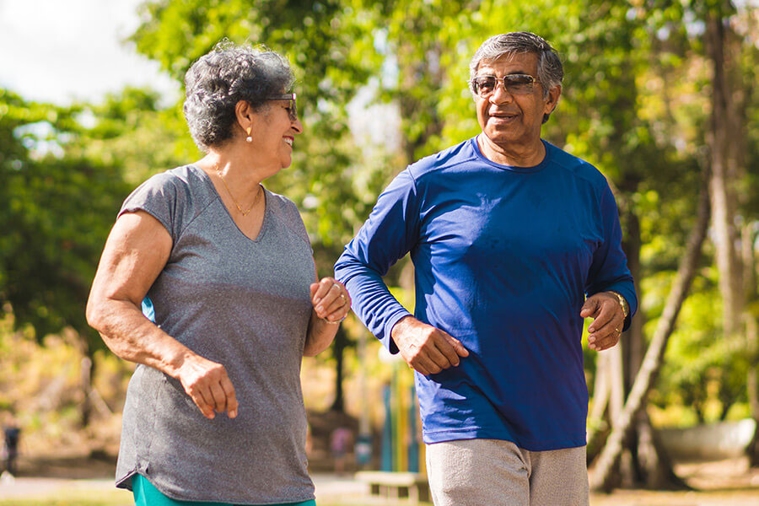
Back in Action on Her Farm Thanks to Knee Replacement
Karen Mendes loves taking care of her homestead farm in Hanford. “I have chickens, sheep, rabbits and pigs,” she says. “I love my animals. I’m very attached to all of them.” But two years ago, while feeding her chickens after a heavy rain, she slipped in the mud and hurt her knee.
“I was in tremendous pain all the time. I just couldn’t get comfortable,” she says. Finally, after other providers couldn’t find a solution, Mendes’ primary care provider referred her to Adventist Health and David Brethouwer, DO, a fellowship-trained adult reconstruction orthopedic surgeon in Tulare.
Finding answers
As soon as she saw Dr. Brethouwer, Mendes had a feeling he would be the one to help relieve her pain. “My previous doctor had ordered X-rays where I was lying down, but they couldn’t find anything wrong with my knees,” she says. “Dr. Brethouwer said, ‘Let’s do X-rays while you’re standing,’ and sure enough, it showed that my knees were basically bone rubbing on bone.”
Dr. Brethouwer says that after explaining her options, he and Mendes opted to start with nonsurgical treatments. She had just started a new job, and she didn’t want to take medical leave right away for surgery.
“We usually start with rest and activity modification to avoid activities that cause pain,” Dr. Brethouwer says. “People can use over-the-counter pain medications such as ibuprofen, acetaminophen or topical gels, and we can initiate cortisone or gel injections to help the pain, too.” He adds that these options typically work for a time but become less effective as the disease and pathology worsens, which is what happened with Mendes.
Renewing the knee
The knee is like a hinge that bends back and forth, with some rotation. The bones, cartilage, muscles, ligaments and tendons work together to stabilize and support the body. So when the cushioning cartilage wears away, as it did for Mendes, exposed bones rub together and cause pain with motion.
After doing several rounds of cortisone shots, Mendes knew it was time for surgery when her pain was so severe that it made her sick. “My pain tolerance is pretty high,” she says, “so when it gets that bad, I know it’s time to do something about it.”
In early 2023, Dr. Brethouwer performed a surgical knee replacement on Mendes. “During the operation, I make a series of cuts on the distal femur (end of the thigh bone), proximal tibia (top of the shin bone) and patella (kneecap), to trim off the portions that are worn out and no longer doing their job,” he explains. Those parts are then replaced by metal caps. “Between those caps, we insert a piece of plastic so that when the knee is going through its range of motion, it glides smoothly instead of rubbing.”
Back to activity
Joint replacements are different from most operations, Dr. Brethouwer says, because a successful recovery requires a proactive approach from the patient. “A large part of knee replacement is making sure we regain motion,” he says. “You can’t start to strengthen the knee or improve endurance until the range of motion is back.” That’s why people who have a knee replacement are usually up and walking, with help from a walker, the same day as the operation.
Mendes says that Dr. Brethouwer educated her on the importance of taking her recovery seriously, which she did. “He said, ‘I’ll do my part, you do your part, and we’ll have you back on your feet.’ He sent me to physical therapy, and I’ve been doing everything they say,” she says. “Right away, I had almost no pain after my surgery, and I’ve been recovering so well.”
She is looking forward to doing the things she loves again — walking around town, taking care of her animals and going back to work — and she credits Dr. Brethouwer with helping her. “I can’t say enough good things about him,” she says. “He really cares about each and every person he treats.”



